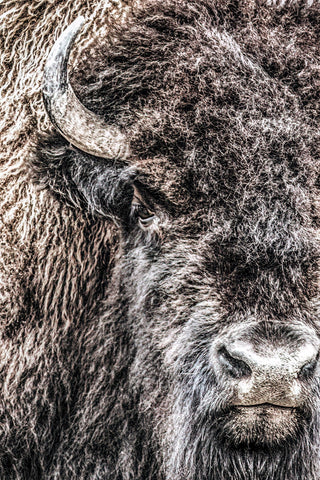Share
Stay Safe While Photographing Bison!
Photographing wildlife, especially creatures as imposing as bison, offers photographers a chance to capture the essence of nature's beauty and raw power. However, it requires more than just technical skill; it necessitates a deep respect for these magnificent animals and an understanding of how to safely interact with them in their natural habitats. This blog post will guide you through the essential tips for safely photographing bison, ensuring both your safety and the well-being of these majestic animals.
Understanding Bison Behavior
Bison are North America's largest land mammals, known for their unpredictable nature. Despite their often calm appearance, they can become aggressive if they feel threatened. They are incredibly fast and can outrun humans, making it essential to maintain a safe distance at all times. Understanding and respecting their behavior is crucial when attempting to photograph them. Always observe their body language; raised tails, snorting, and pawing at the ground can be signs of agitation. Keeping a safe distance and using a long lens can help you capture stunning images without disturbing them.
Safety Tips for Bison Photography
- Maintain a Safe Distance: The National Park Service recommends staying at least 25 yards (23 meters) away from bison. Use a telephoto lens to capture close-up shots without getting too close.
- Be Aware of Your Surroundings: Always be aware of your escape route in case a bison charges. Avoid positioning yourself between a bison and its calf, as mothers can be particularly protective.
- Use a Vehicle as a Blind: Photographing from inside a vehicle can offer an additional layer of safety. Bison are less likely to see a car as a threat compared to a human on foot.
- Do Not Feed or Attract Bison: Feeding wildlife can alter their natural behavior and make them associate humans with food, leading to dangerous situations. Keep all food items securely stored.
- Stay Quiet and Move Slowly: Sudden movements or loud noises can startle bison. Move slowly and keep noise to a minimum to avoid drawing attention to yourself.
Best Practices for Bison Photography
- Lighting and Time of Day: Early morning or late afternoon provides the best natural lighting for photography, casting beautiful golden hues and creating dramatic shadows. Bison are more active during these times, increasing your chances of capturing dynamic shots.
- Composition and Perspective: Experiment with different angles and compositions. Try capturing bison against the backdrop of their natural environment to add context to your photos. A lower angle can make the bison appear more majestic and imposing.
- Patience is Key: Wildlife photography requires patience. Spend time observing the bison from a distance to anticipate their movements and behaviors. Waiting for the right moment can lead to breathtaking images that convey the essence of these powerful creatures.
- Respect Nature: Always prioritize the welfare of the bison over getting the perfect shot. Disturbing wildlife for the sake of photography is unethical and can have negative impacts on their natural behavior.
Photographing bison can be a thrilling and rewarding experience, offering photographers the opportunity to connect with nature on a profound level. By following these safety guidelines and respecting the animals' space, you can capture the majesty of bison while ensuring a harmonious coexistence between humans and wildlife.


